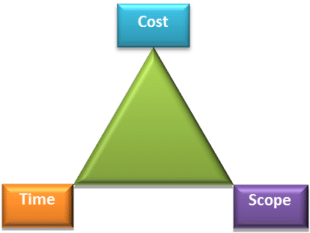As usual, in the cool of the evening after a hard day job, if I was able to make it home early from work, I would take a stroll or go cycling around my estate to burn some calories and sometimes, fraternize with neighbors and security guards. I do this to understand if anything has changed since last time I inquired about the neighborhood. It is my way of gauging the pulse of the area, perception of security, residents’ support for proposed projects by the estate association, and general changes and information you would not get unless you mingled.
On one of those occasions, as I had just stepped out of my gate, I saw one of the estate security guards juggling three empty bottles of coca cola while being cheered by onlookers of which some were waiting to take turns. For a win, I realized that each person had to sustain a round of the juggling for 5 minutes amidst the noise and cheering. Starting with 10 peoples or more betting the sum of three hundred Naira each (equivalent of a $1), they take turns in cycle, juggling, until a winner emerges. The last man standing wins the game and gets away with 70 percent of the cash while the remaining is shared among the second and third place winners.
The game had just been discovered by these men who are idle most of the time due to the nature of their work. At the point in time I arrived at the scene, 5 persons had lost out, 5 men were left to go and 3 out of the 5 still in the game had taken turns and were successful. One man was currently on the game and at his 3rd minute, with so much anxiety evident in his look, hoping for a win. Meanwhile, the last man was eagerly waiting for his turn looking concern. Of course, the game goes on and on until one gamer wins and the game starts all over with or without the same set of people.
Project Constraints
The more I observed this game, the more I got a sense of the game as it relates to what I do for living, project control consulting. Thinking about the juggling game event on one occasion, I could relate the three bottles being juggled to an important concept in project management commonly referred to as ”triple constraints” and usually represented with a triangle as below.

PMBOK 5th edition mentioned that managing a project typically includes balancing these competing project constraints.
Project success is often defined by these constraints; scope, time and cost. They are constraints because they are limited. In some text, they are expanded to include resources, quality, risk, etc. However, the article’s focus is on scope, time and cost.
These competing project constraints have to carefully be monitored, controlled and balanced by the project team to ensure a successful project delivery. A good understanding of these constraints precedes a successful project monitoring & control effort which in turn precedes a project that is delivered on time, within budget and meets agreed scope requirements.
Now let’s understand it….
Triple Constraints
Projects are defined by scope, time and cost while triple constraints is an idea in project management which views these elements as limited project factors that have a triangular relationship such that if one of them changes, the other two are influenced. For example, time (schedule) can be shortened for a fixed scope of work but additional resources would be required which would cost the project more than its original budget. On the other hand, project scope can be reduced to maintain a limited or pre-determined cost (budget) with a shorter schedule.
In a nutshell:
- Scope – A clearly specified requirement(s) to meet the project objective
- Time – The time required to build, create or develop a product or service
- Cost – How much money is required to build, create or develop a product or service
This drives project monitoring & control.
The importance of triple constraints is evident in project control as it forms the basis for project tracking, monitoring, analyzing and controlling. Scope, cost and time (schedule) are tracked and monitored to proactively mitigate or control any deviation(s).
 Again, while watching the game on that day, I observed that the designated gaming ground was littered with broken bottles as a result fatigue and loss of concentration by gamers who lost out at different times. I hope you remember that letting the bottle fall meant losing out of the game.
Again, while watching the game on that day, I observed that the designated gaming ground was littered with broken bottles as a result fatigue and loss of concentration by gamers who lost out at different times. I hope you remember that letting the bottle fall meant losing out of the game.
Likewise, letting one element of project constraints fall (losing control or grip of it) means a failed project since success and failure are measured by these elements. These constraints require close monitoring if project execution must stay within the predefined limits to achieve the project objective. Here lies the role of project controls, some of which are:
- Controlling changes and recommending corrective or preventive action in anticipation of possible problems,
- Monitoring the ongoing project activities against the project management plan and the project performance measurement baseline, and
- Influencing the factors that could circumvent integrated change control or configuration management so only approved changes are implemented.
Further details on this can be found in the fifth edition of PMBOK.
According to PMBOK 5th Edition, the Monitoring and Controlling Process Group consists of those processes required to track, review, and orchestrate the progress and performance of the project; identify any areas in which changes to the plan are required; and initiate the corresponding changes with the key benefit that: Project performance is measured and analyzed at regular intervals to identify variances on the triple constraints from the plan.
Take Away
Now, just like the bottle jugglers, the project manager who is constantly presented with an evaluation of the project by his project control team, must not let any of the triple constraints fall to the ground but keep joggling them until the project goal is realized. Otherwise, as with the juggler’s case, the project fails.
Great attention is to be given to the triple constraints at the planning phase of the project. This will minimize deviation during the execution and control phase.
As a project manager, an understanding of the triple constraints, their interactions, relevance and how to juggle them throughout the life of a project will determine the success of that project at closing.
A project is therefore said to be successful if it finishes on time, within budget and meets all requirements as contained in the scope.
What are your thoughts on balancing the triple constraints and the role of project controls in doing so? Please share your comments below and I will respond.
If you like this blog post, please hit the like button and share it with your circle of connections. Thank you.
About the Author Simeon Ochiche
 Simeon Ochiche MEM, PMP®, a Senior Project Management Practitioner with Projecontrol Consulting Limited, which provides innovative Project Control solutions for Construction Projects, Shutdown, Turnaround & Outages (STO) including project management and project control education.
Simeon Ochiche MEM, PMP®, a Senior Project Management Practitioner with Projecontrol Consulting Limited, which provides innovative Project Control solutions for Construction Projects, Shutdown, Turnaround & Outages (STO) including project management and project control education.
Simeon is passionate about project control. He has over thirteen years combined experience in the Oil & Gas industry, with multinational companies, covering Major Capital Projects (MCP), Small Capital Projects (SCP), and Turnaround Maintenance among others. He has both client’s and contractor’s perspective having worked from both ends.
Simeon is a licensed Project Management Professional PMP®, recognized by the Project Management Institute PMI® (the world’s leading project management membership body) and a member of Association of Cost Engineers (AACE). He is an engineer with background in Polymer Engineering and holds a Master of Engineering Management (MEM) degree from River State University of Science and Technology, Port Harcourt, Rivers State. He has published papers in reputed journals.
He can be reached on his website.





![[Free 90-min Masterclass] The Ultimate Leadership Recipe for Project Professionals](https://www.projectcontrolacademy.com/wp-content/uploads/2024/08/4-1024x576.jpg)















